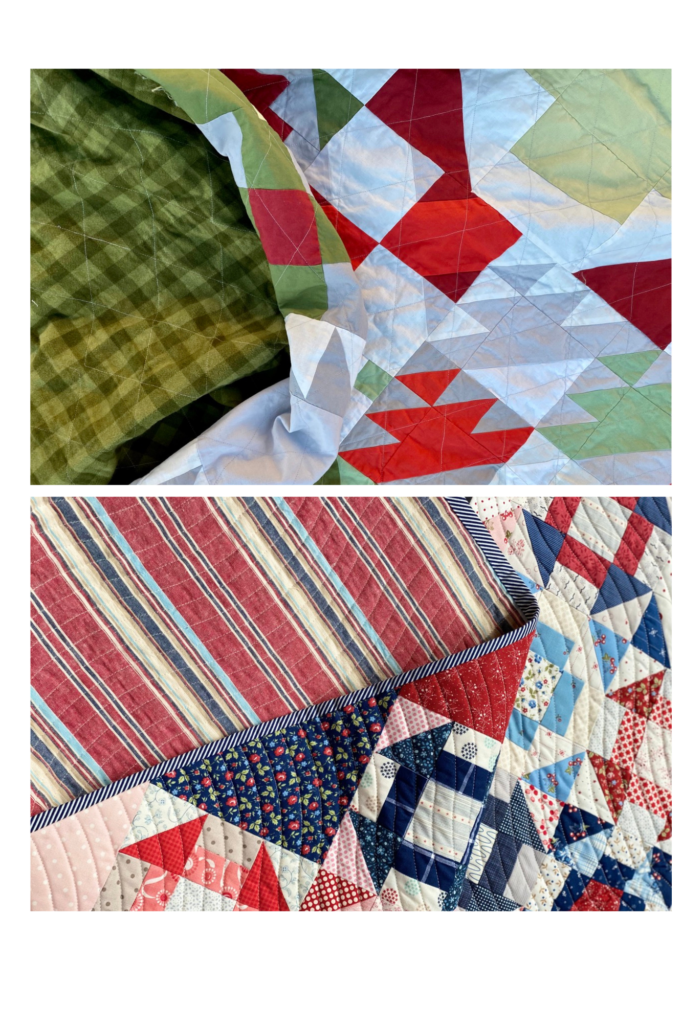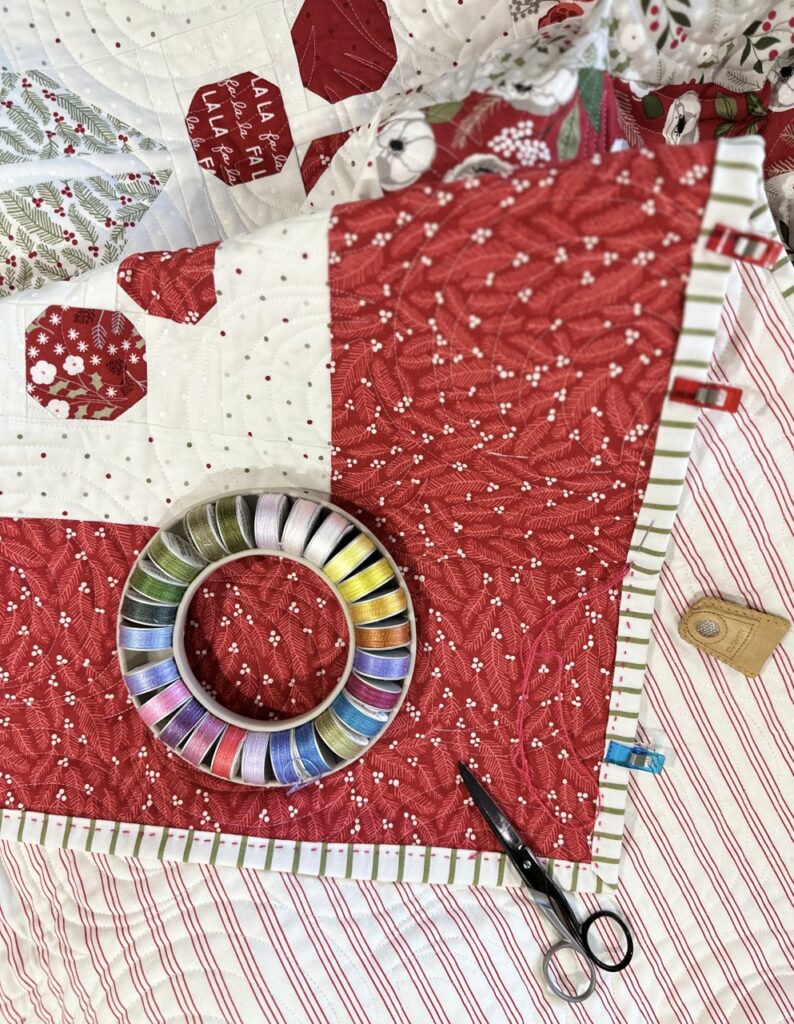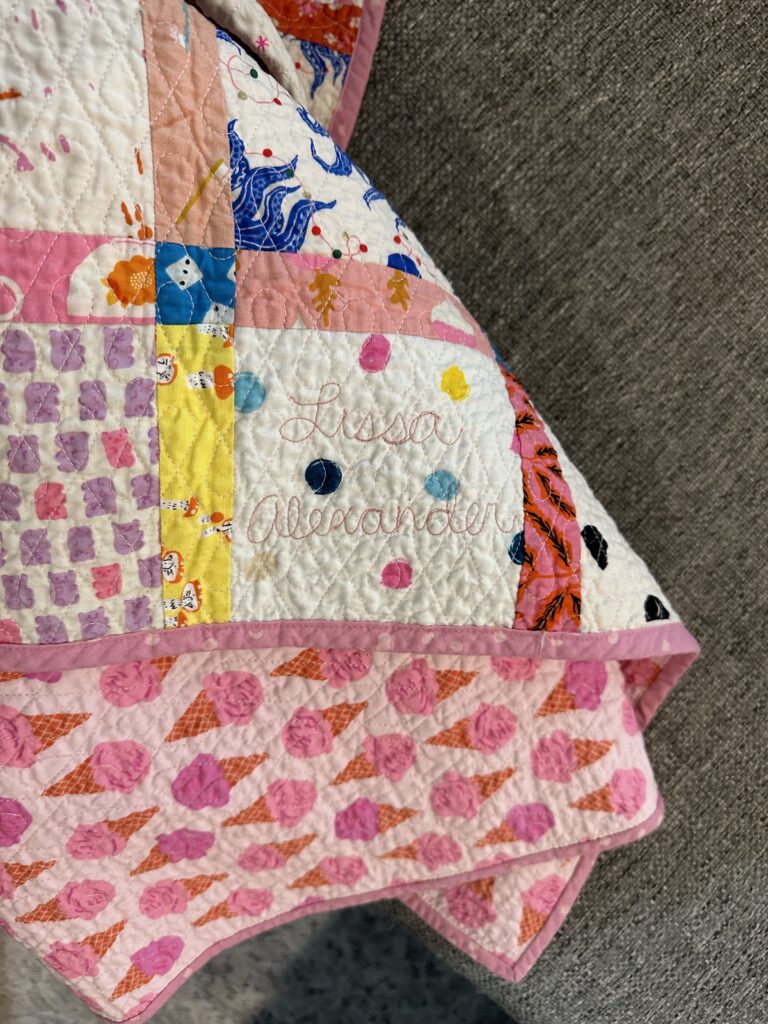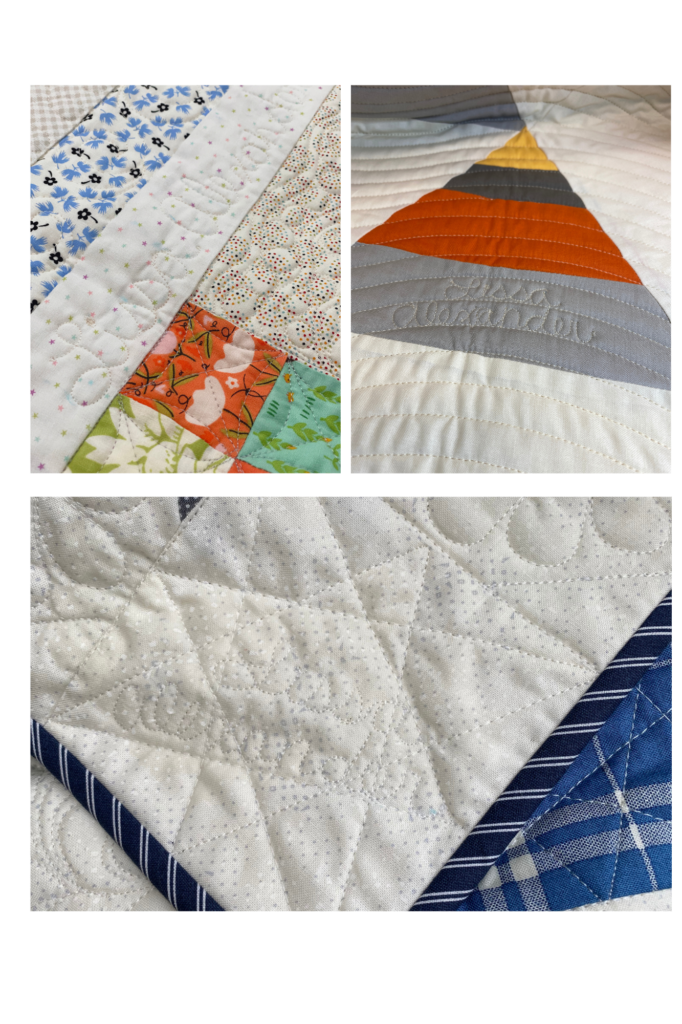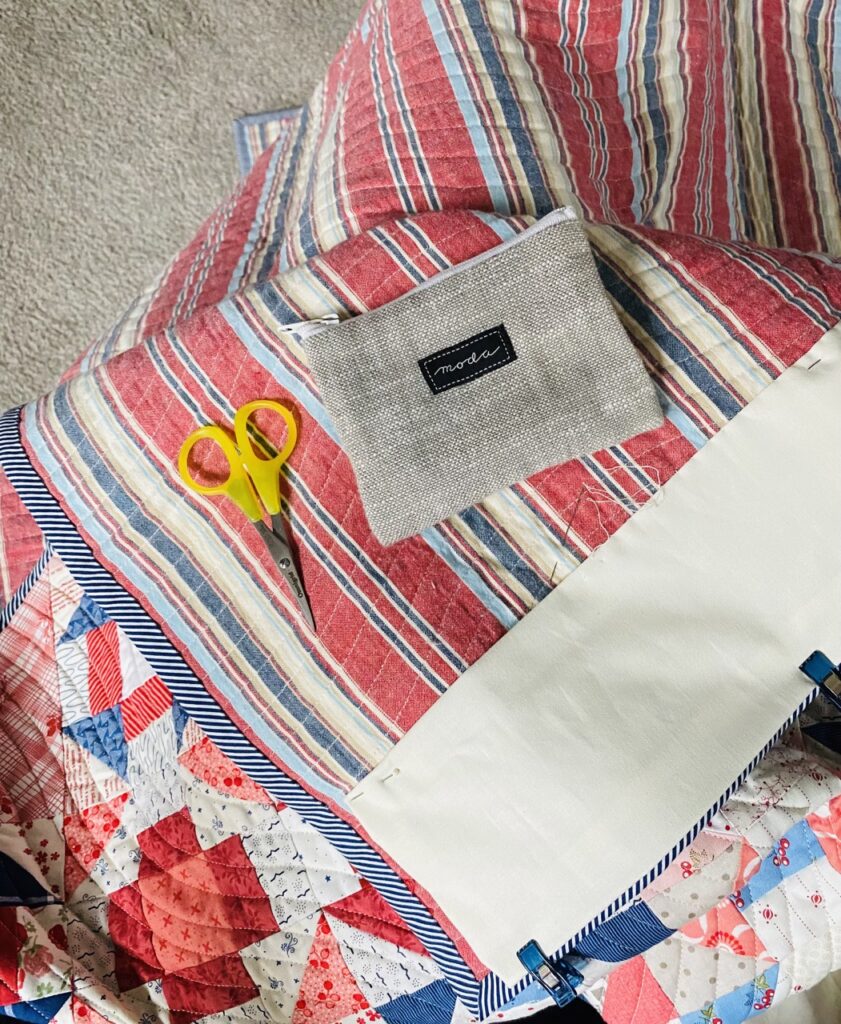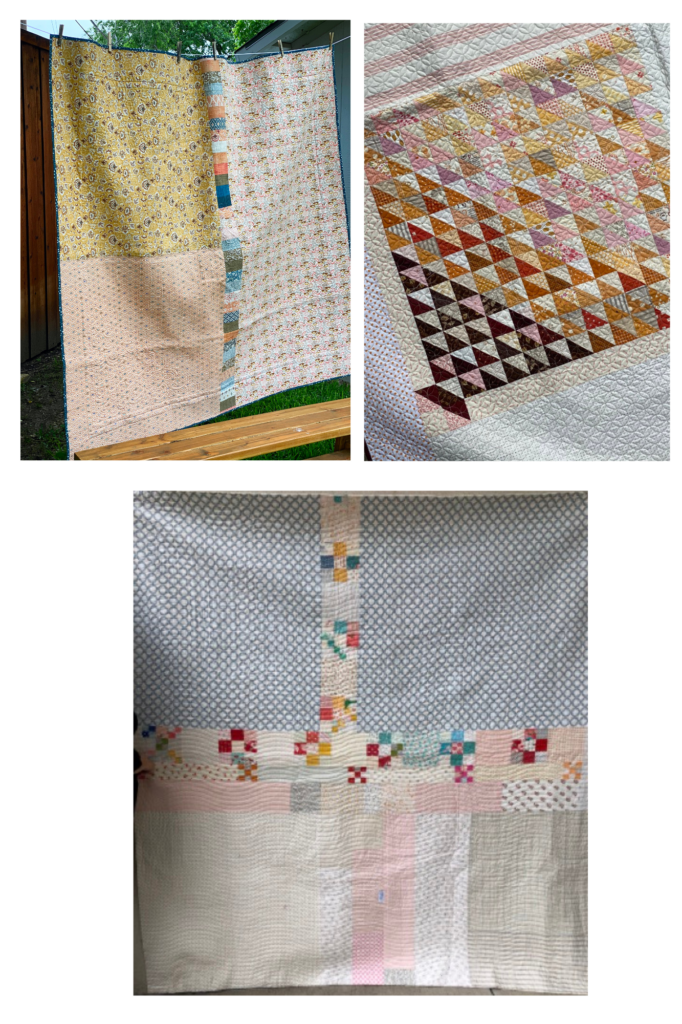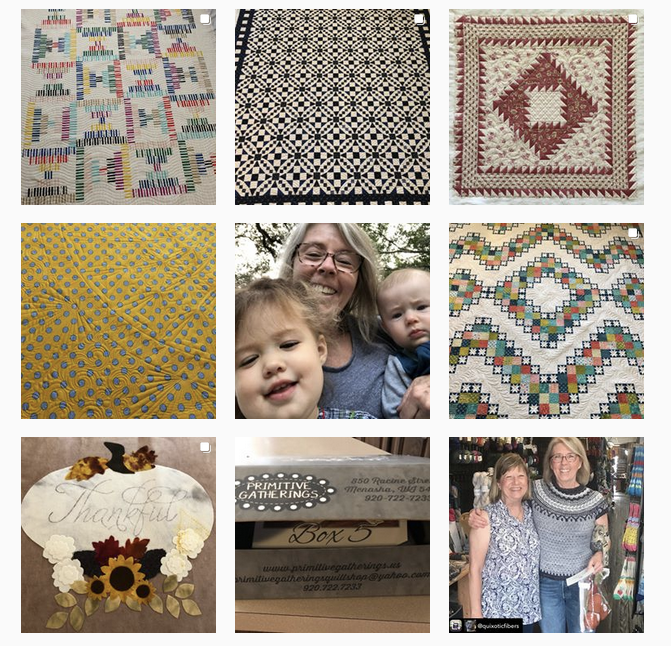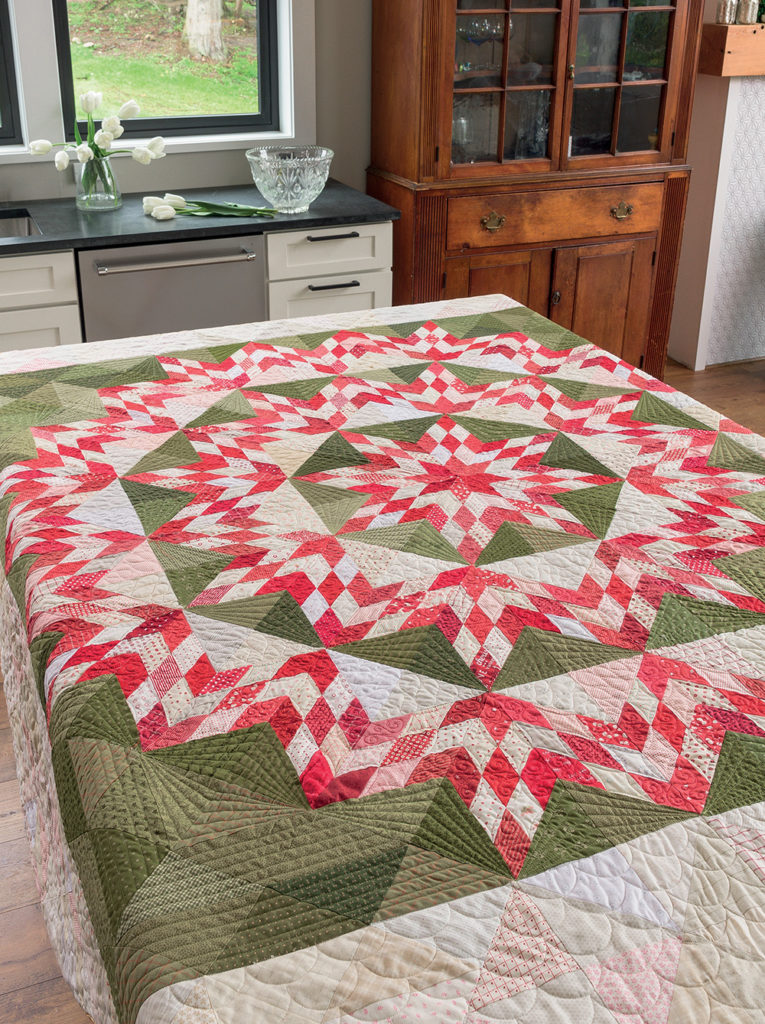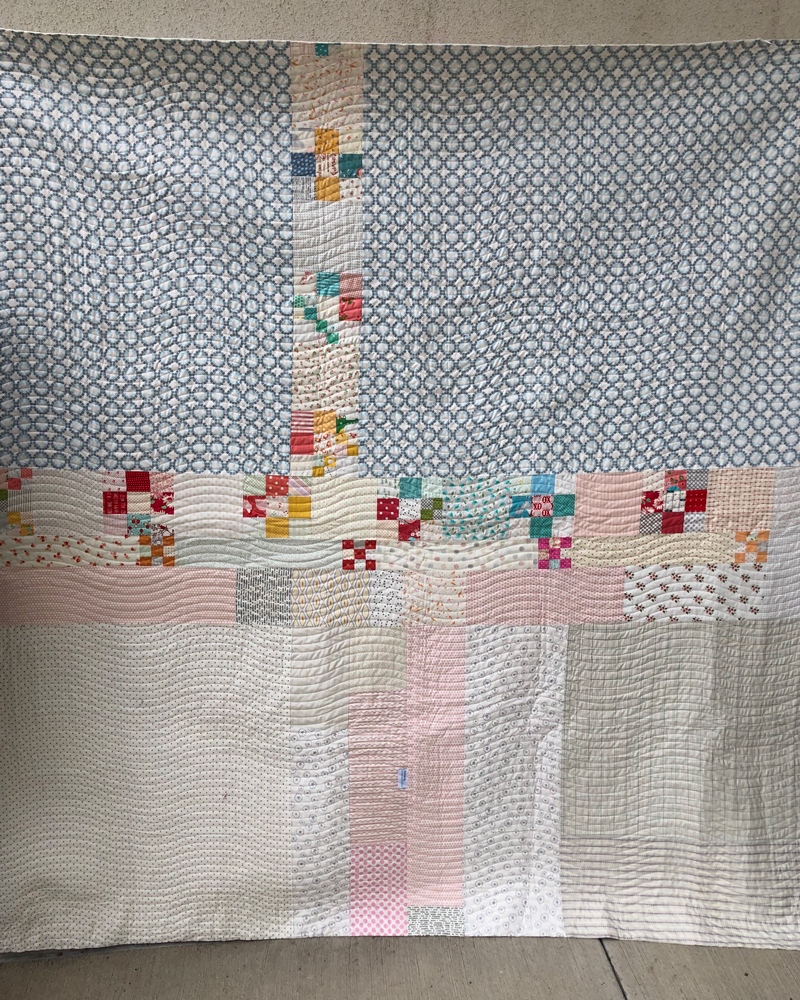We are a month into 2024. I don’t usually make resolutions. I don’t pick a word for the year.
But I have done something quilty each year. The majority of the things listed below are very predictable for me but I did concentrate an entire year on each. This all started several years ago with my self proclaimed, Year of the DOT, polka dot. I put a polka dot fabric on the back of every quilt I made that year. I am still a huge fan of using dots wherever I can.
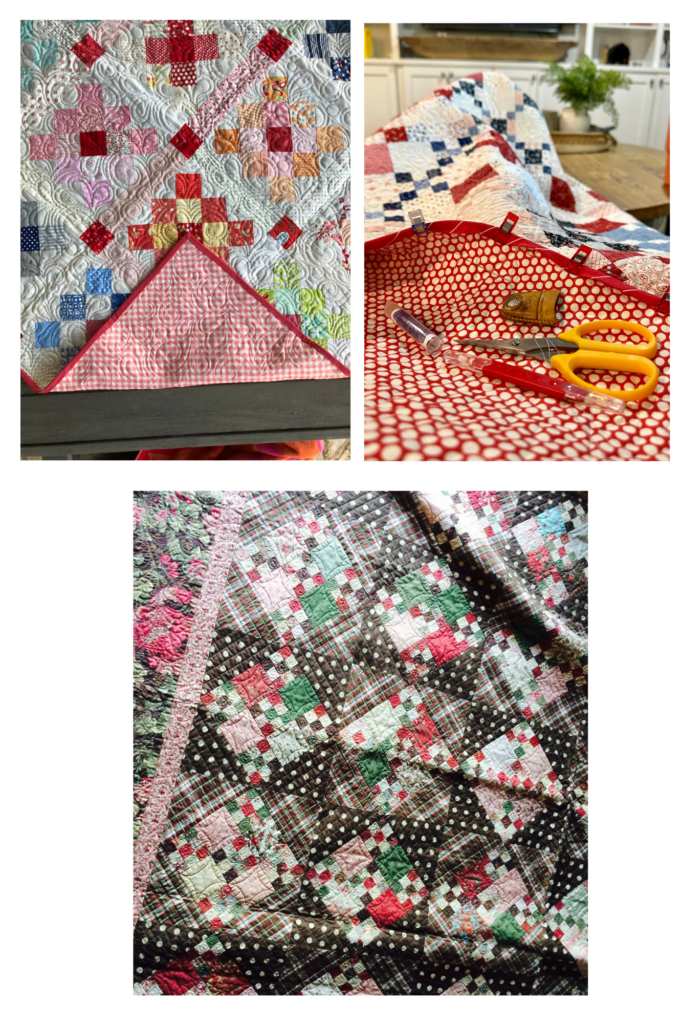
The next year was the year of WOVENS. Each of my quilts had a plaid/woven fabric for the back. I loved how my quilts felt. The quilts seem to just drape a little differently since most ovens are a bit more lightweight that their print counterparts. Adding the geometric plaids on the back was such a nice surprise when you flipped over the quilt.
The next year was BIAS STRIPED BINDINGS. I collect stripes so I always have something for a binding. I know all of this is silly, but it is a fun game. Did I date and of these quilts? NO. Did I document them? NO. I guess if I pulled all of my quilts made within the last 7 or 8 years I could figure some of the timeline out.
This one I am embarrassed about. My goal was to put a label on all my quilts. This is so important and I should ABSOLUTELY do this. But I didn’t! Maggi Honeyman of @sewmaggi quilts the majority of my quilts and she always stitches my name somewhere in the quilt. I have considered this a label but I need to do better. Thank you Maggi!
On year 5, I thought it would be great to add a sleeve to the back of each of my quilts. A sleeve is a casing on the top back of the quilt and is usually used to hang the quilts. I didn’t make it through the year on this one. Epic fail in fact. Really who needs sleeves, you most likely are not going to hang quilts on every wall as if they are wallpaper. Fast forward to today, right now! I have entered 3 quilts in the Dallas Quilt Show and yep, they all need sleeves added.
Year 6, PIECED BACKS! This is my fav and I still try to do this as much as I can. I highly suggest trying this for several reasons.
- Pieced backs use up lots of scraps.
- No need to buy 6 yards of fabric
- Freedom to create a puzzle of pieces making sure it is oversized for the Longarm.
- I love flipping the quilt over and the surprise on the back.
Year 7, I decided to play with what was on the inside of the quilts. I do have to say this has been my favorite thing to do, only second to pieced backs. I tried different batting, everything from bamboo, cotton, wool or poly/cotton. Each of them quilted up differently. The wool had so much great texture that the stitching disappeared into the quilt and seemed to make the fabric pop. Other than living in Texas I would use wool more. I use black batting for dark quilts and I used white batting for quilts with lots of light or low volume backgrounds or even white solid backgrounds. I could not believe the difference this made in the color of the batting not discoloring the whites.
Does that make sense? The majority of battings are cream in color. If you use a cream batting in a white quilt, it will slightly discolor the white. I also tried flannel for batting and it is my very very favorite. The quilt is thin but dense, and drapes every curve of your body. Wide flannel is hard to come by so when I see it I buy it. Lisa Bongean of Primitive Gatherings has a 108″ flannel coming out in solids. Moda’s flannels are actually cotton fabric so the construction is a tad different from actual flannel fabrics. Moda’s flannels are then double brushed ( brushed on each side) so this makes them perfect for quilt back or batting!! As soon as Lisa’s fabric- Farmhouse Flannels get here, I will be buying bolts just for battings!!
So for this year I am tackling journalling each quilt. The saying every quilt tells a story is true so I am logging the info, details and any happenings along the way. Plus I am getting way too old too remember this stuff.
-modalissa
